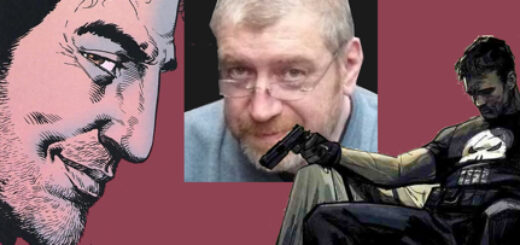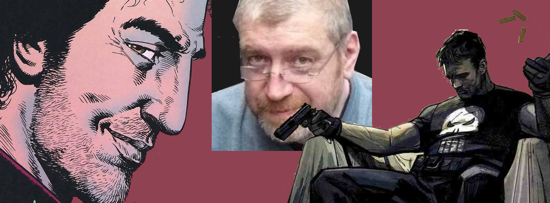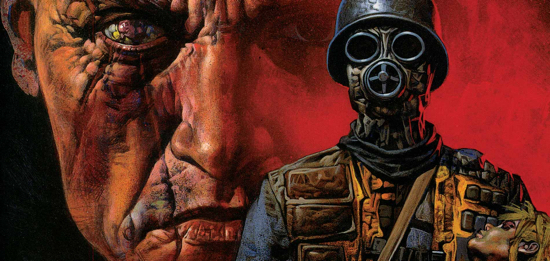“Are you in or out?”
The Doctor and Clara wake in the company of two strangers and are quickly told they are to rob a bank. Everything is planned so well, almost as if the planner knows what’s going to happen, that The Doctor quickly realizes that this isn’t a mere bank heist, but a…
TIME HEIST
By Steve Thompson and Steven Moffat
Directed by Douglas MacKinnon
The Bank of Karabraxos is the single most secure bank in human history. A loyal staff, redundant security systems, and a guard dog that literally smells guilt in the customers. When The Doctor picks up the phone of the TARDIS and suddenly recovers from a blackout in a strange room with two criminals, it’s too tantalizing not to move ahead with. Being chased by the bank’s security at all times, the quartet must breach unbreachable security, all the while not actually know what they’re supposed to steal.
A solid thriller with questions and puzzles all the way through. Once again, the idea of breaking into the perfect bank is not new, but with the right character work and a delightful twist at the end, it works wonderfully.
GUEST STAR REPORT – Keeley Hawes (Ms. Delphox, Mme. Karabraxos ) is best known to genre fans as the voice of Lara Croft in seven games to date over nearly ten years. She’s played Lady Agnes Holland on the new version of Upstairs Downstairs, and DI Alex Drake on Ashes to Ashes, the sequel to Life on Mars.
Jonathan Bailey (Pai) appeared with David Tennant in the murder procedural Broadchurch and had the titles role in Leonardo.
THE MONSTER FILES – The Teller is a magnificent beast, both in design and ability. Unlike a number of creatures in the new series, it was made with practical effects, which meant it was on set with the actors and they didn’t have to imagine what it looked like. Like the Crooked Man from Hide, the being was driven by the loss of its mate, and once they were reunited, its rage and malice abated. There have been plenty of telepathic species in the show, though few with such a weaponized form. The Sensorites could affect the minds of other beings, and their planetary neighbors the Ood could communicate at amazing distances from each other.
BACKGROUND BITS AND BOBS –
THE FACES OF THOSE HE’S WRONGED FLOAT UP AT HIM – In that fast flip of hardened criminals, more than a few recognizable faces can be seen. There was a Sensorite from the Hartnell adventure, a Tereliptil from the Davison years, an Ice Warrior, a group of Slitheen, and a Weevil and John Hart from Torchwood. But most interesting is a character from the Doctor Who comics – Absalom Daak, Dalek Killer. Created by Steve Moore and Steve Dillon, Daak enjoyed a long run in the Doctor Who Weekly.
BECAUSE IT ORBITS URANUS AND LOOKS FOR KLINGONS – One of the treasures in Madame Karabraxos’ vault is quite valuable to episode director Douglas MacKinnon. It’s a rocket ship made from a toilet paper tube, made for him by her daughter for Christmas.
ONE CAN DO THE WORK OF TWO – They only made one Teller suit. Even the last scene as they walk away was a double-exposure, the suit actor playing both the male and female.
“It’s a memory worm” – First seen in The Snowmen, the memory worm is a creature whose slimy coating has the defensive ability to erase the past hour of memory from any being who touches it. In the aforementioned adventure, Sontaran Strax keeps touching it, as he is a boob. Here, they’re used to erase the memories of The Doctor’s gang (he has a gang now) before beginning their little expedition. The effects of the worms seem to have changed a bit, or at least clarified – here it’s shown that the memories are not erased as much as blocked. Not exactly a big change, and effectively no difference when attempting to get away from a predator.
“Why are we not using the TARDIS?” – It’s always fun to get to answer the questions the viewer are already thinking of. Let’s them know you’re a step ahead. Solar Storms affected the navigation of the TARDIS in The Rebel Flash, so there’s precedent for keeping away from the interference. Of course, as we’ll find out later, there’s a more ulterior motive for not using it – to make things more fun.
“He’s gone already, it’s over” – Once again, while the Tennant or Smith incarnations would sweat and suffer over not being able to save someone they’ve not even met, this Doctor is a pragmatist. Even when it looks like their own compatriots are killed, he moves forward, eyes on the prize. Of course, one could note that Clara seems to have rather quickly gotten over the loss of Psi and Saibra once that big tantalizing vault opens.
“Basically, it’s the eyebrows” – Not to mention the air of knowledge and authority The Doctor gives off. He uses a trick yr. obt. svt. uses whenever he can – act like you’re supposed to be there. Nine times out of ten, people take your unspoken word for it, and follow your lead.
“You can delete your memories?” – Psi’s story is somewhat of a mirror to Captain Jack Harkness’ original backstory, which has since been somewhat forgotten. While a Time Agent, he had a large part of his memories deleted, and was trying to find who did it, and if possible recover them.
“Don’t think” – Once again, a simple act is made scary. From trying not to Blink, to Clara having to hold her breath at the beginning of the season to trying not to think of anything here, they’re all things that the viewer can’t help but trying not to do along with her as they watch. We can only hope that nobody thought of the Stay-Puft Marshmallow Man.
“It’s a neophyte circuit – I’ve only ever seen one once before” – And I’ll lay odds this is the same one. The Doctor set this entire adventure up – the request from Madame Karabraxos could have been done any number of ways, but he chose to set it up in a way that would not only be the most interesting for himself and Clara, but to help cure/repair two people who he’d clearly never met before he did his research and found them.
“I hate the Architect!” – The theme of the episode is the idea of not being able to trust, or even stand, someone who looked exactly like you. It’s why Saibra couldn’t touch anyone (“Could you trust someone who looked like you, out of your own eyes?”), it’s why Madame Karabraxos’ relationship with her cloned employees was to tense, and why The Doctor thought The Architect was such a bossy prat. At that point he didn’t know he’d planned all this, he only suspected, based on an analysis of the mysterious man’s personality. It’s not the first time he’s displayed such a low opinion of himself – once he realizes who the Dream Lord was in Amy’s Choice, he said there was only one person in the universe who could hate him that much.
BIG BAD WOLF REPORT – Not much mention of the plot in this episode, save for a brief appearance by Danny Pink, who is certainly (OK, hopefully) not the Big Bad, but is certainly setting up to be important to Clara.
“I’m giving you my telephone number” – At the beginning of the episode, The Doctor once again mentions that there’s only a handful of people who has the phone number to the TARDIS, including a mysterious lady in a shop who gave it to Clara back in The Bells of St. John. Madame Karakraxos is now a member of that group, which also includes most of of The Doctor’s recent companions (like Martha Jones who used it to call him to stop The Sontaran Stratagem), Winston Churchill (from well before Victory of the Daleks) and, apparently, Marilyn Monroe, whose marriage to The Doctor did not count. And apparently, he’s STILL been too busy to re-route the line to the control panel, as he asked Handles to remind him to do.
“Beat that for a date” – And right there, all the questions about “Why would The Doctor go through all that rigmarole” are answered. He set the whole thing up as a game to give himself and Clara something to do that day. In DC Comics, wealthy socialite Sue Dearborn Dibny would get the ultimate Birthday present for her husband, Ralph Dibny, AKA The Elongated Man. She would set up an elaborate mystery game for him, usually with the assistance of other members of the Justice League, to give him an adventure he’d not soon forget. It’s entirely likely that’s the motivation for The Doctor here.
NEXT TIME ON DOCTOR WHO – Clara tries to give Danny more of her time, but The Doctor finds a problem that needs solving by any means necessary. The Caretaker starts his new job this Saturday















